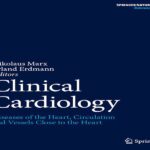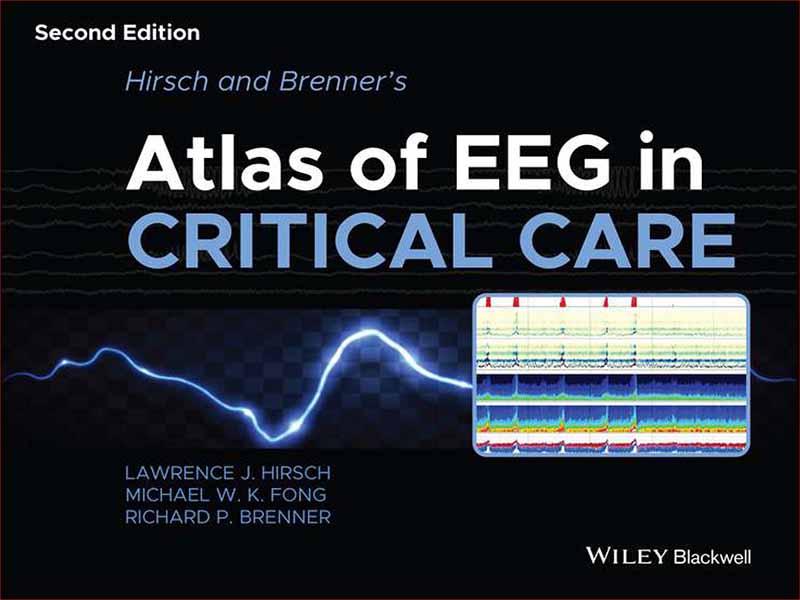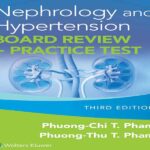- عنوان کتاب: Hirsch and Brenner’s Atlas of EEG in Critical Care
- نویسنده: Lawrence J. Hirsch, MD
- حوزه: مراقبتهای ویژه
- سال انتشار: 2023
- تعداد صفحه: 579
- زبان اصلی: انگلیسی
- نوع فایل: pdf
- حجم فایل: 73.9 مگابایت
استفاده از EEG مداوم (cEEG) در بیماران بدحال از زمان اولین ویرایش این اطلس، درست بیش از یک دهه پیش، به طور قابل توجهی گسترش یافته است. تلاشهای مشترک چند مرکزی مشخص کردهاند که افزایش بار تشنج (از جمله تشنجهای غیر تشنجی) پیشبینیکننده مستقل پیامد بدتر در بسیاری از انواع مختلف بیماران است که به روشهای مختلفی از جمله پیامد عملکردی طولانیمدت، شناخت و صرع بعدی اندازهگیری میشود. این تلاشها همچنین نشان دادهاند که حتی الگوهای بسیار صرعی که به عنوان تشنج واجد شرایط نیستند، گاهی اوقات برای ایجاد آسیب پیشرونده عصبی، بهویژه در شرایط یک حمله حاد مغزی کافی هستند. برای اکثریت قریب به اتفاق بیماران، پیشنهاد بالینی کمی در کنار تخت وجود دارد که این الگوها یا تشنج ها وجود دارند (به غیر از اختلال در هوشیاری)، و بنابراین cEEG نقش مهمی در مراقبت از بیمار دارد. مراکز با استفاده از فناوری جدید و طراحی واحدهای مراقبت ویژه عصبی بسیار تخصصی با ظرفیت ثبت EEG در هر زمانی از روز، برای تشخیص تشنج یا الگوهای EEG بالقوه آسیبرسان، پاسخ دادهاند و به سرعت این اطلاعات را به پزشکان معالج برمیگردانند تا بهترین اطلاعات را در اختیار پزشکان قرار دهند. تصمیمات مدیریتی EEG مداوم از آن زمان به بخشی از مراقبت از بیماران بدحال در بسیاری از موسسات در سراسر جهان تبدیل شده است. در نتیجه، متخصصان مغز و اعصاب و متخصصان مغز و اعصاب باید با استفاده از مانیتورینگ معمول مغز با EEG یا “نوروتلمتری” آشنا شوند، همانطور که با نظارت معمول قلب و عروق آشنا می شوند. اطلس با بخشی در مورد اصول اولیه تفسیر EEG شروع می شود که برای شخصی با حداقل تجربه EEG (فصل 1-2) تنظیم شده است. اطلس با فصل هایی در ادامه می آید: الگوهای EEG که در انسفالوپاتی و کما مشاهده می شوند – هم غیر اختصاصی و هم اختصاصی (فصل 3). ناهنجاری های کانونی (فصل 4)؛ الگوهای ریتمیک و دوره ای (RPPs)، از جمله توضیح دقیق دستورالعمل اصطلاحات استاندارد شده مراقبت های ویژه EEG انجمن اخیر فیزیولوژی عصبی بالینی آمریکا (ACNS) که به طور گسترده در سال 2021 به روز شد (فصل 5). تشنج و وضعیت صرع، از جمله تعاریف جدید تشنج های الکتروگرافی و الکتروکلینیکی / وضعیت صرع (فصل 6)، و الگوهای بحث برانگیز مانند آنهایی که در پیوستار ictal-interictal (اکنون تعریف شده است). مصنوعات گیج کننده، از جمله مواردی که اغلب به اشتباه تفسیر می شوند یا تشنج را تقلید می کنند (فصل 7). و الگوهایی که معمولاً پس از ایست قلبی دیده می شوند (فصل 8). پس از بخش های بالا در مورد الگوهای EEG خام از هر دو دیدگاه اولیه و پیشرفته، یک بخش رنگی گسترده در مورد نظارت مداوم EEG دیجیتال طولانی مدت، از جمله تکنیک های EEG کمی برای کمک به تفسیر ضبط های طولانی مدت وجود دارد (فصل 9-10). این تکنیک ها می توانند به تشخیص موثر تشنج، ایسکمی و سایر رویدادهای عصبی کمک کنند و می توانند به تجسم روندهای طولانی مدت کمک کنند. این فصل همچنین شامل نمونه هایی از نظارت چندوجهی مغز در محیط مراقبت عصبی است. در سراسر اطلس، یافته های EEG برجسته شده و با جزئیات در خود ردیابی برچسب گذاری می شوند. هر فصل با بخش کوتاهی از متن و فهرستی از مهمترین منابع به عنوان مطالعه پیشنهادی آغاز می شود. به طور کلی، فصل ها از مطالب بسیار ابتدایی در ابتدای فصل به پیشرفته تر پیشرفت می کنند. ضمیمه ای که اصطلاحات ACNS 2021 را خلاصه می کند نیز گنجانده شده است. فهرست گسترده ای نیز وجود دارد که به خواننده کمک می کند تا به سرعت آنچه را که نیاز دارد پیدا کند.
The utilization of continuous EEG (cEEG) in critically ill patients has markedly expanded since the first edition of this atlas just over a decade ago. Multicenter collaborative efforts have determined that increases in seizure burden (including nonconvulsive seizures) are independent predictors of worse outcome in many different types of patients, as measured in many ways, including long-term functional outcome, cognition and later epilepsy. These efforts have also shown that even highly epileptiform patterns that do not qualify as seizures are sometimes sufficient to cause progressive neuronal injury, especially in the setting of an acute brain insult. For the vast majority of patients there is little clinical suggestion at the bedside that these patterns or seizures are present (other than impaired alertness), and thus cEEG has a crucial role in patient care. Centers have responded by incorporating new technology and designing highly specialized neuro-intensive care units with the capacity to record EEG at any time of the day, to detect seizures or potentially injurious EEG patterns, and rapidly feed this information back to treating clinicians to best inform management decisions. Continuous EEG has since become a routine part of caring for critically ill patients in many institutions around the world. As a result, neurologists and intensivists need to become familiar with the use of routine brain monitoring with EEG, or ‘neurotelemetry’, as they have with routine cardiovascular monitoring. The atlas begins with a section on the basics of EEG interpretation geared towards someone with minimal if any EEG experience (Chapters 1–2). The atlas follows with chapters on: EEG patterns seen in encephalopathy and coma – both nonspecific and specific (Chapter 3); focal abnormalities (Chapter 4); rhythmic and periodic patterns (RPPs), including detailed explanation of the recent American Clinical Neurophysiology Society (ACNS) standardized critical care EEG terminology guideline that was extensively updated in 2021 (Chapter 5); seizures and status epilepticus, including new definitions of electrographic and electroclinical seizures/status epilepticus (Chapter 6), and controversial patterns such as those on the ictal-interictal continuum (now defined); confusing artifacts, including ones that are often misinterpreted or that mimic seizures (Chapter 7); and patterns that are commonly seen post cardiac arrest (Chapter 8). After the above sections on raw EEG patterns from both a basic and advanced viewpoint, there is an extensive color section on prolonged continuous digital EEG monitoring, including quantitative EEG techniques to assist with interpretation of prolonged recordings (Chapters 9–10). These techniques can aid in efficient recognition of seizures, ischemia and other neurological events, and can help visualize long-term trends. This chapter also contains examples of multimodal brain monitoring in the neurocritical care setting. Throughout the atlas, EEG findings are highlighted and labeled in detail within the tracings themselves. Each chapter beginswith a short section of text and a list of the most important references as suggested reading. In general, the chapters progress from very basic material at the start of the chapter to more advanced. An appendix summarizing the 2021 ACNS terminology is included as well. There is an extensive index as well to help the reader rapidly find what they need.
این کتاب را میتوانید بصورت رایگان از لینک زیر دانلود نمایید.
Download: Hirsch and Brenner’s Atlas of EEG in Critical Care



































نظرات کاربران